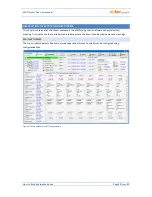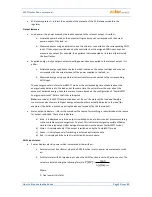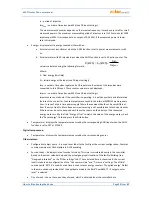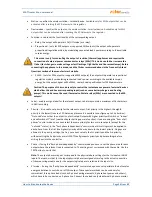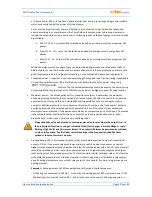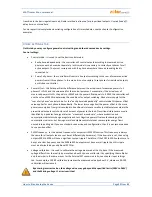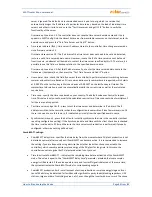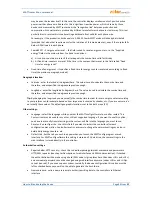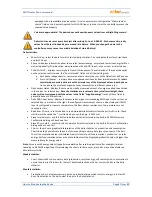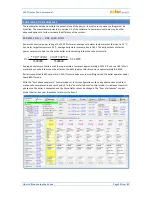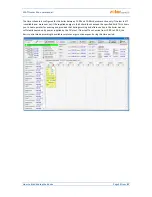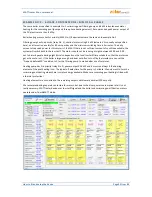
WATTrouter Mx - user manual
How to fit and setup the device
Page 41 from 82
Power – it can be configured for proportional outputs (if the function is proportional or PWM) for the
Enforced mode. This field can be used here to enforce the output power as a percentage of the
connected power. Thus, the output can be switched proportionally even when switched by the time
schedule. If the power is set lower than 100% then such enforcement does not deactivate the basic
mode of regulation according to surplus energy. For example, if the output is enforced to 50%, and the
surplus is available for the switching on 75%, the output will be switched to 75% of its nominal power.
For the Restricted mode, this value is not used.
Always keep the value equal to 100% in cases where the output is set to the proportional
function, causing an increased flicker (fast changes in mains voltage or rapid flashing of light
bulbs and fluorescent lamps). The output will always be permanently switched on when fully
excited. See the flicker recommendation in the Frequently Asked Questions section of the
manufacturer's website.
M to S – shortcuts for weekdays. The time schedule will be active only on checked days.
LT – If you mark this field, the time schedule additionally requires the existence of the low tariff signal
to become active. This function differs based on the time schedule mode, and it is primarily based on
the fact that electric power in low tariff is cheaper than electric power in regular (peak) tariff:
a)
Restricted mode – the output is restricted only if low tariff is not active.
b)
Enforced mode – the output is enforced only if low tariff is active.
Energy – if you mark this field, the time schedule activity additionally depends on the status of the
daily energy counter of the relevant output (the "Supplied energy" fields). Again the function differs
based on the time schedule mode:
a)
Restricted mode – the output will be restricted only if the daily energy counter exceeds the value
specified in the Limit field.
b)
Enforced mode– the output will be enforced only if the daily energy counter did not yet reach the
value specified in the Limit field.
Temperature – if you mark this field, the time schedule activity additionally depends on the
temperature measured by the specified sensor. In case ANDI input that is not configured to measure
temperature is selected, or the temperature sensor selected is not working, then this temperature
condition is not used, and the Temperature sensor(s) fault is emitted. There are 2 kinds of
temperature conditions which always have built-in internal hysteresis of 1 °C:
c)
Lower than – the output will be enforced / restricted only if the temperature is lower than the
assigned limit.
d)
Higher than– the output will be enforced / restricted only if the temperature is higher than the
assigned limit.
Tip:
Time schedules may also be set for an output which does not have any assigned priority. These outputs may
be used for example, as time switch clock etc. Labels and "Connected power" field may be configured for these
outputs using the Output settings tab. "Connected power" field of such output is then used to update the daily
energy counter.
Note:
The conditions described above combine with logic AND within one time schedule. If you need to create a
logic OR combination, you need to add a second time schedule with the same time range and another condition.
For example, if the schedule should restrict the output function in case where the energy counter exceeds the
5 kWh limit AND the temperature at the assigned input exceeds 60 °C, just use one time schedule where both
conditions are set. If this should limit the output function in case where the energy counter exceeds the 5 kWh
limit OR the temperature at the assigned input exceeds 60 ° C, it will be necessary to use 2 time schedules with
the same time limits but each set for a different additional condition.
Note:
Impact-free transition to the basic regulation mode: If the condition necessary for the enforcement of a
relay output no longer exists, a basic 10s delay is set for this output. This delay is used to ensure impact-free



